Follow for updates on the severe weather slamming California. The storms have killed at least 17 people since the start of the year, California Governor Gavin Newsom said.




An intense blast of energy that was detected on Earth appears to have come from two colliding and collapsing stars, according to scientists.
Researchers looking through archival observations of gamma rays say they have found “oscillating” signals in two bursts of energy.
They were found in old data taken from an out-of-use experiment in orbit around Earth.

This blog post was co-authored with Guy Eyal, an NLP team leader at Gong.
TL;DR: In 2022, large models achieved state-of-the-art results in various tasks and domains. A significant breakthrough in natural language processing (NLP) was achieved when models were trained to align with user intent and human preferences, leading to improved generation quality. Looking ahead to 2023, we can expect to see new methods to improve the alignment process (such as reinforcement learning with AI feedback), the development of automatic metrics for understanding alignment effectiveness, and the emergence of personalized aligned models, even in an online manner. There may also be a focus on addressing factuality issues as well as developing open-source tools and specialized compute resources to allow the industrial scale of aligned models. In addition to NLP, there will likely be progress in other modalities such as audio processing, computer vision, and robotics, and the development of multimodal models.
2022 was an excellent year for machine learning, with numerous large language models (LLMs) published and achieving state-of-the-art results across various benchmarks. These LLMs demonstrated their superior performance through few-shot learning, surpassing smaller models that had been fine-tuned on the same tasks [1–3]. This has the potential to reduce the need for specialized, in-domain datasets. Techniques like Chain of Thoughts [4] and Self Consistency [5] also helped to improve the reasoning capabilities of LLMs, leading to significant gains on reasoning benchmarks.
Dr Vittorio Sebastiano presents about aging and reprogramming and answers questions from audience in this clip. He specifies short Reprogramming does not impact cellular Identity but Impact cellular age and cellular health.
Dr. Vittorio Sebastiano is an Assistant Professor in the Department of Obstetrics and Gynecology at Stanford School of Medicine. His lab has established a new technology named ERA (Epigenetic Reprogramming of Aging), which repurposes the conceptual idea of reprogramming, with the goal to promote epigenetic rejuvenation of adult cells leaving their identity untouched. This new technology was patented and is being implemented by Turn Biotechnologies, of which Dr. Sebastiano is co-founder and Chair of the Scientific Advisory Board.
In 2009, Dr. Sebastiano completed a postdoctoral fellowship at the laboratory of Dr. Marius Wernig at Stanford University, where he implemented the newly discovered iPSC technology and was among the first to demonstrate that iPSCs can be efficiently derived, genetically modified, and implemented for cell therapy in genetic diseases (Sebastiano et al., 2014, Science Translational Medicine).
Dr. Sebastiano completed his undergraduate and graduate studies at the University of Pavia, Italy, where he studied murine germ cells and preimplantation development and where he pioneered cellular reprogramming by Somatic Cell Nuclear Transfer. He joined the Max Planck Institute for Molecular Biomedicine as a postdoctoral fellow under the mentorship of Dr. Hans Robert Schöler, where he continued his research on cellular reprograming, germ cells biology, and embryonic development.
DISCLAIMER: Please note that none of the information in this video constitutes health advice or should be substituted in lieu of professional guidance. The video content is purely for informational purposes.
#ReverseAging #reprogramming #immortal #VittorioSabastiano #Stanford #DavidSinclair #NMN 3sirtuin #NadBooster #Exercise #NAD #BeingHungry #NMN #Rejuvenate #Reprogramming #Mitochondria #ALA #Metformin #PQQ #CoQ10 #Carnitine #Antioxidant #LookYounger #NMN #Resveratrol #Quercetin #Fisetin #senolytics #OliveOil #Sirtuin #HIIT #aging #Lifespan #NMN #NR #Spermidine #Metformin #Berberine #ReverseAging #Epigenetic #OleicAcid #NMN #NAD #Sirtuins #Fasting #Longevity #RestoreYouth #Reprogramming #DavidSinclair #DrSinclairLab #Healthspan #Younger #antiaging #DrSinclair #NAD #longevity #Bioscience #Epigenome
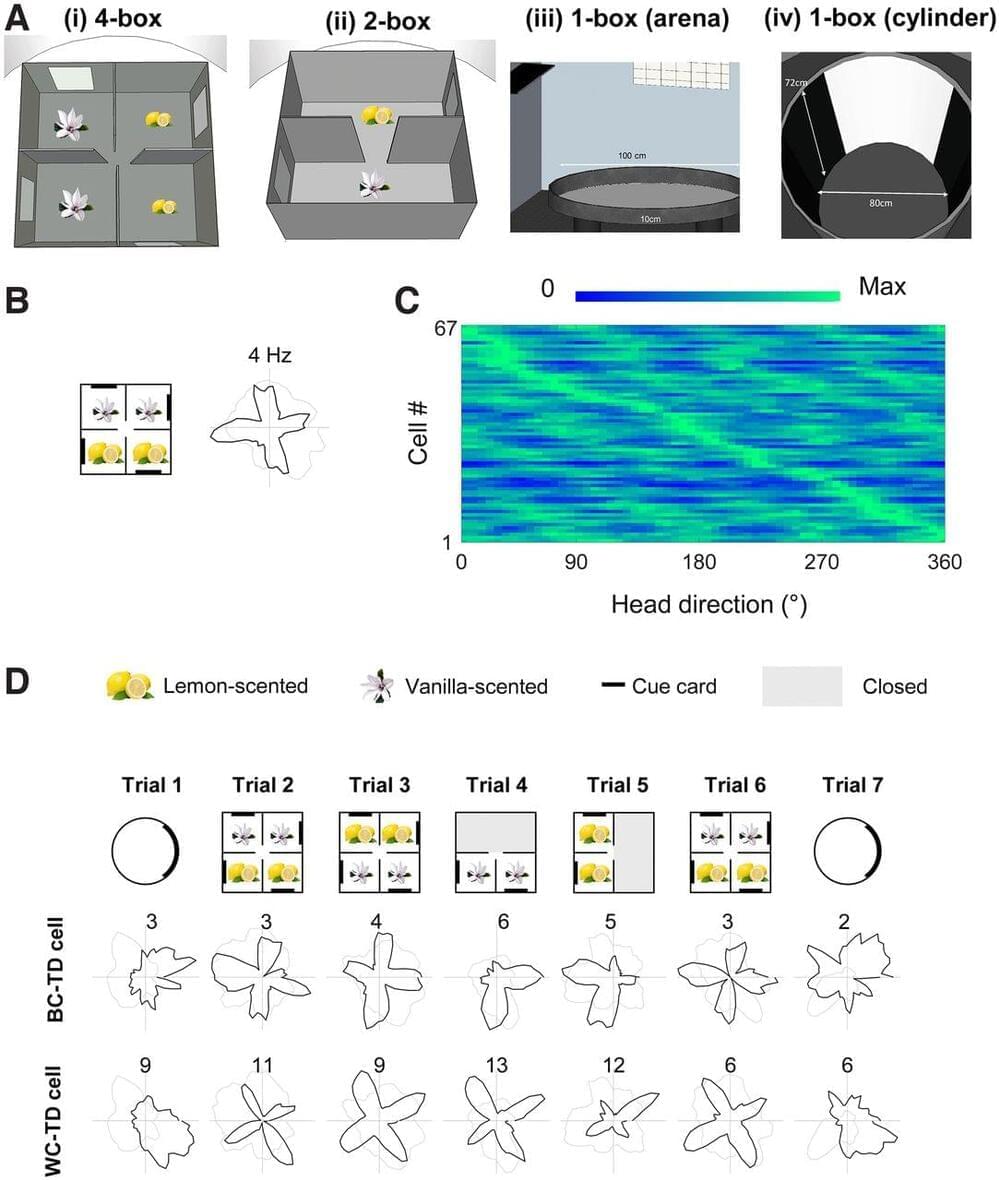
We investigated how environment symmetry shapes the neural processing of direction by recording directionally tuned retrosplenial neurons in male Lister hooded rats exploring multicompartment environments that had different levels of global rotational symmetry. Our hypothesis built on prior observations of twofold symmetry in the directional tuning curves of rats in a globally twofold-symmetric environment. To test whether environment symmetry was the relevant factor shaping the directional responses, here we deployed the same apparatus (two connected rectangular boxes) plus one with fourfold symmetry (a 2 × 2 array of connected square boxes) and one with onefold symmetry (a circular open-field arena). Consistent with our hypothesis we found many neurons with tuning curve symmetries that mirrored these environment symmetries, having twofold, fourfold, or onefold symmetric tuning, respectively. Some cells expressed this pattern only globally (across the whole environment), maintaining singular tuning curves in each subcompartment. However, others also expressed it locally within each subcompartment. Because multidirectionality has not been reported in naive rats in single environmental compartments, this suggests an experience-dependent effect of global environment symmetry on local firing symmetry. An intermingled population of directional neurons were classic head direction cells with globally referenced directional tuning. These cells were electrophysiologically distinct, with narrower tuning curves and a burstier firing pattern. Thus, retrosplenial directional neurons can simultaneously encode overall head direction and local head direction (relative to compartment layout). Furthermore, they can learn about global environment symmetry and express this locally. This may be important for the encoding of environment structure beyond immediate perceptual reach.
SIGNIFICANCE STATEMENT We investigated how environment symmetry shapes the neural code for space by recording directionally tuned neurons from the retrosplenial cortex of rats exploring single-or multicompartment environments having onefold, twofold, or fourfold rotational symmetry. We found that many cells expressed a symmetry in their head direction tuning curves that matched the corresponding global environment symmetry, indicating plasticity of their directional tuning. They were also electrophysiologically distinct from canonical head directional cells. Notably, following exploration of the global space, many multidirectionally tuned neurons encoded global environment symmetry, even in local subcompartments. Our results suggest that multidirectional head direction codes contribute to the cognitive mapping of the complex structure of multicompartmented spaces.
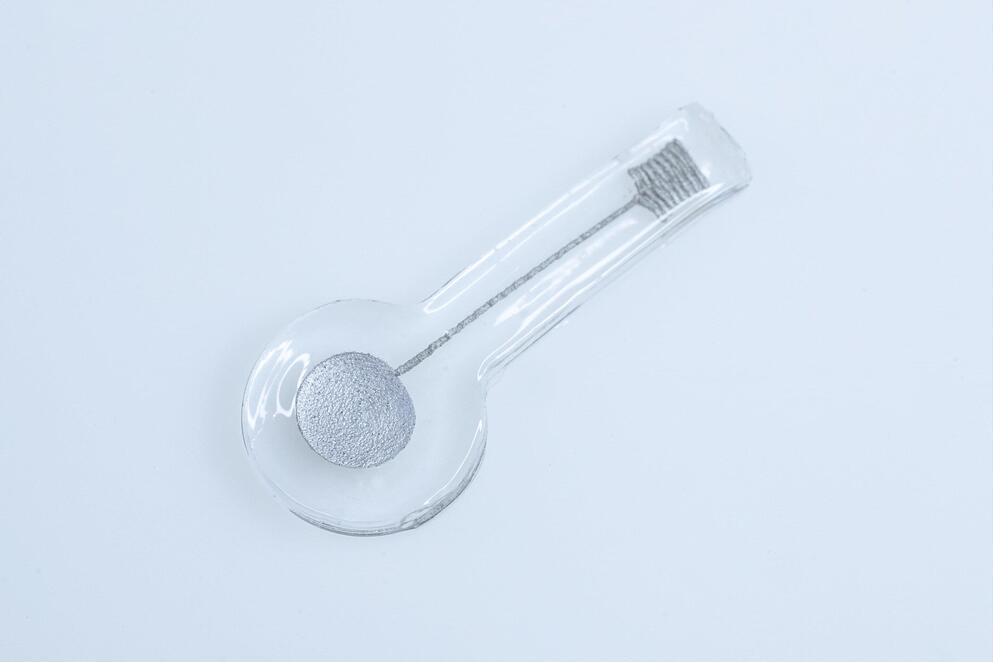
Hydrogels are three-dimensional (3D) polymer networks that do not dissolve in water but retain large amounts of liquids. Due to this advantageous property, hydrogels are particularly promising material platforms for both biomedical and environmental applications, as they can survive in bodily fluids or in wet natural environments without dissipating.
Over the past decade, engineers and materials scientists have been developing numerous electronic devices based on soft hydrogels, including environmental and biomedical sensors, drug delivery devices, and artificial tissue. Despite the huge potential of these hydrogel-based devices, their widespread implementation has so far been hindered by their high production costs.
A research team led by Dr. Nanjia Zhou at Westlake University and Westlake Institute of Advanced Studies in China have recently introduced a new strategy to enable the 3D printing of soft hydrogel electronics. Their approach, introduced in a paper published in Nature Electronics, could help to lower the production costs of numerous hydrogel-based devices, including strain sensors, inductors, and biological electrodes.
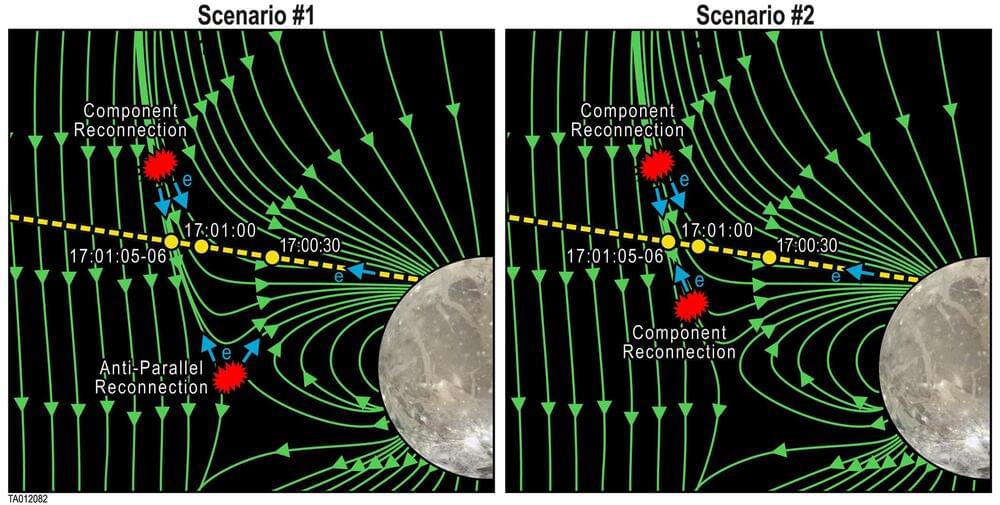
In June 2021, NASA’s Juno spacecraft flew close to Ganymede, Jupiter’s largest moon, observing evidence of magnetic reconnection. A team led by Southwest Research Institute used Juno data to examine the electron and ion particles and magnetic fields as the magnetic field lines of Jupiter and Ganymede merged, snapped and reoriented, heating and accelerating the charged particles in the region.
“Ganymede is the only moon in our solar system with its own magnetic field,” said Juno Principal Investigator Dr. Scott Bolton of SwRI. “The snapping and reconnecting of Ganymede’s magnetic field lines with Jupiter’s creates the magnetospheric fireworks.”
Magnetic reconnection is an explosive physical process that converts stored magnetic energy into kinetic energy and heat. Ganymede’s mini-magnetosphere interacts with Jupiter’s massive magnetosphere, in the magnetopause, the boundary between the two regions.
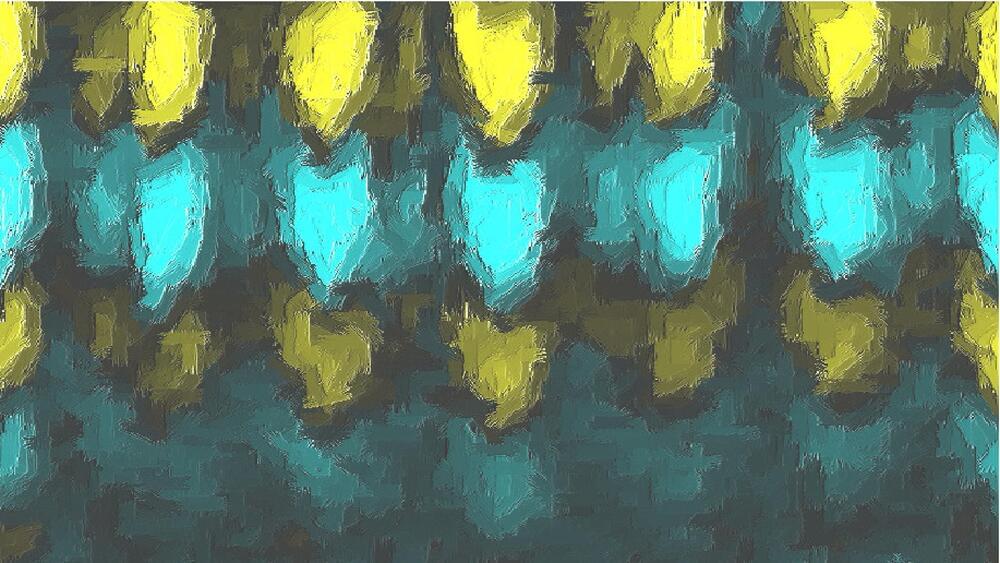
One of the biggest achievements of quantum physics was recasting our vision of the atom. Out was the early 1900s model of a solar system in miniature, in which electrons looped around a solid nucleus. Instead, quantum physics showed that electrons live a far more interesting life, meandering around the nucleus in clouds that look like tiny balloons. These balloons are known as atomic orbitals, and they come in all sorts of different shapes—perfectly round, two-lobed, clover-leaf-shaped. The number of lobes in the balloon signifies how much the electron spins about the nucleus.
That’s all well and good for individual atoms, but when atoms come together to form something solid—like a chunk of metal, say—the outermost electrons in the atoms can link arms and lose sight of the nucleus from where they came, forming many oversized balloons that span the whole chunk of metal. They stop spinning about their nuclei and flow through the metal to carry electrical currents, shedding the diversity of multi-lobed balloons.
Now, researchers at the Quantum Materials Center (QMC) at the University of Maryland (UMD), in collaboration with theorists at the Condensed Matter Theory Center (CMTC) and Joint Quantum Institute (JQI), have produced the first experimental evidence that one metal—and likely others in its class—have electrons that manage to preserve a more interesting, multi-lobed structure as they move around in a solid. The team experimentally studied the shape of these balloons and found not a uniform surface, but a complex structure. This unusual metal is not only fundamentally interesting, but it could also prove useful for building quantum computers that are resistant to noise.
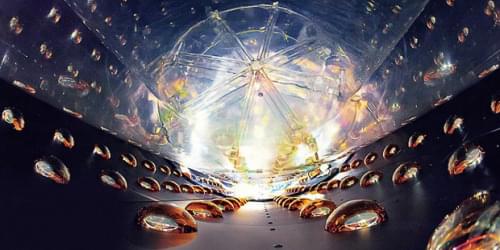
Several experiments have been set up outside nuclear reactors to record escaping antineutrinos. The data generally agrees with theory, but at certain energies, the antineutrino flux is 6–10% above or below predictions. These so-called reactor antineutrino anomalies have excited the neutrino community, as they could be signatures of a hypothetical sterile neutrino (see Viewpoint: Getting to the Bottom of an Antineutrino Anomaly). But a new analysis by Alain Letourneau from the French Atomic Energy Commission (CEA-Saclay) and colleagues has shown that the discrepancies may come from experimental biases in associated electron measurements [1].
The source of reactor antineutrinos is beta decay, which occurs in a wide variety of nuclei (more than 800 species in a typical fission reactor). To predict the antineutrino flux, researchers have typically used previously recorded data on electrons, which are also produced in the same beta decays. This traditional method takes the observed electron spectra from nuclei, such as uranium-235 and plutonium-239, and converts them into predicted antineutrino spectra. But Letourneau and colleagues have found reason to doubt the electron measurements.
The team calculated antineutrino spectra—as well as the corresponding electron spectra—using a fundamental theory of beta decay. This method works for some nuclei, but not all, so the researchers plugged the gaps using a phenomenological model. They were able to treat all 800-plus reactor beta decays, finding “bumps” in the antineutrino flux that agree with observations. Similar features are predicted for electron spectra, but they don’t show up in the data. The results suggest that an experimental bias in electron observations causes the reactor antineutrino anomalies. To confirm this hypothesis, the researchers call for new precision measurements of the fission electrons.